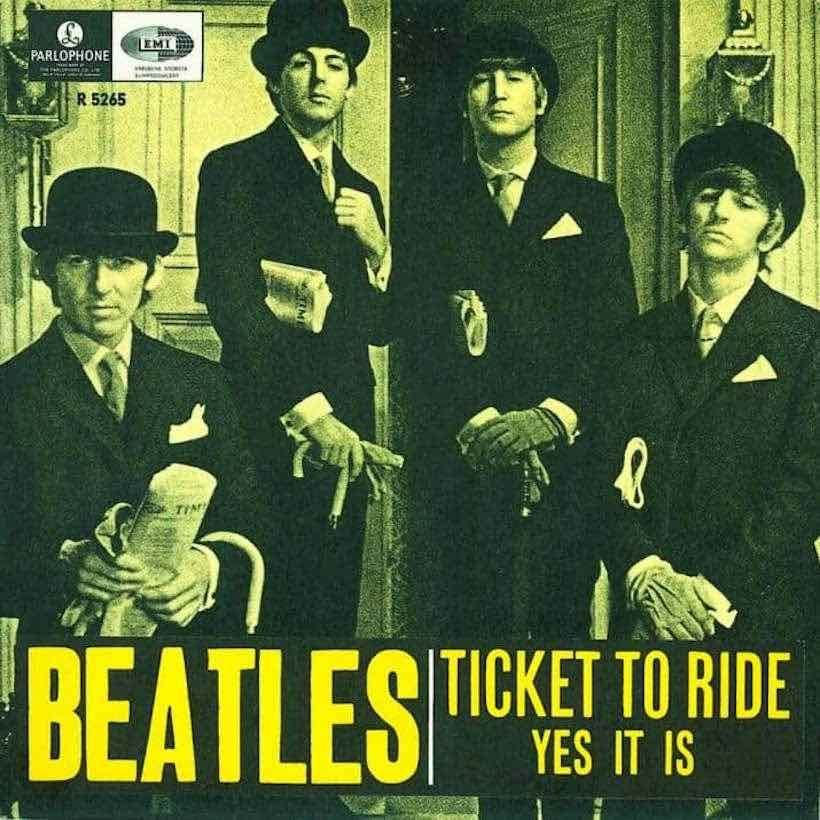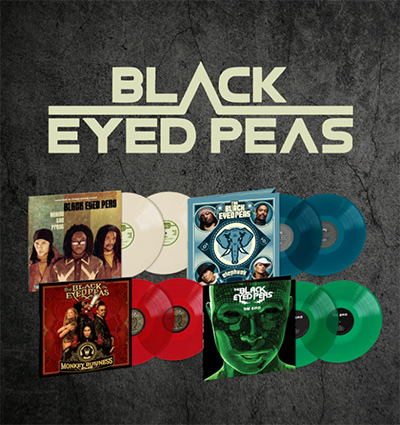‘Ticket To Ride’: The Beatles Take A ‘Cheeky, Radical’ Trip
Paul McCartney called it a ‘radical’ release, but the song wasted little time becoming the group’s seventh UK No.1 in two years.

“Cheeky” and “radical” were two of the words used by Paul McCartney to describe The Beatles’ approach to a song that became their latest UK singles chart entry for the week of April 15, 1965. It was “Ticket To Ride,” which swiftly went on to the Billboard Hot 100 for May 22.
The Lennon-McCartney song was recorded at Abbey Road’s Studio Two on February 15, with George Martin producing and Norman Smith engineering. On the day that “Eight Days A Week” was released in the US, the group worked on “Ticket To Ride” as one of three songs on that afternoon session schedule, all of which would be included in their second feature film, directed by Richard Lester.
When “Ticket To Ride” came out on Capitol in the US, the accompanying press release declared that the song was “from the United Artists release Eight Arms To Hold You.” For a long time, this was the working title for the picture that came to be known and loved as Help!, which was released in late July, just ahead of the group’s new LP of the same name.
The Beatles foretell the video boom
In the film, “Ticket To Ride” is the soundtrack to shots of The Beatles on the ski slopes at Obertauern in Austria. The scenes were filmed just a month after they recorded the song, in a verité style that clearly inspired the music videos that became so prevalent in the 1980s, following the rise of MTV.
Listen to the best of The Beatles on Apple Music and Spotify.
The song marks a sea change in The Beatles’ singles: it was their first to run for over three minutes, as well as being more complex both musically and in its lyrical inspiration than its predecessors. Ringo’s drum patterns, in particular, are very different to those heard on a regular pop single.
The rise of the overdub
Unlike many of their previous recordings, where multiple takes were individually numbered, “Ticket To Ride” and some other songs from this period were created from a basic rhythm track. They were then subjected to numerous overdubs until everyone was satisfied with the result. The fact that only two takes are listed does not accurately represent the time spent on perfecting the finished master.
The promo film for the song, seen above and shot along with four others at Twickenham Film Studios in November 1965, was a long day’s work for everyone involved. Filming began in the afternoon, and besides director Joe McGrath, who would later direct 1969’s The Magic Christian, starring Peter Sellers and Ringo Starr, there were four cameramen, a sound recordist and a lighting man. They worked straight through into the early hours of Wednesday November 24, by which time there were ten clips of five different songs that could be used in markets around the world.
Changing the tempo
McCartney, remembering the Abbey Road sessions for “Ticket To Ride” and the way the song’s ending was devised, said: “Instead of ending like the previous verse, we changed the tempo. We picked up one of the lines, “My baby don’t care,” but completely altered the melody.
“It was something specially written for the fade-out, which was very effective but it was quite cheeky and we did a fast ending. It was quite radical at the time.”












